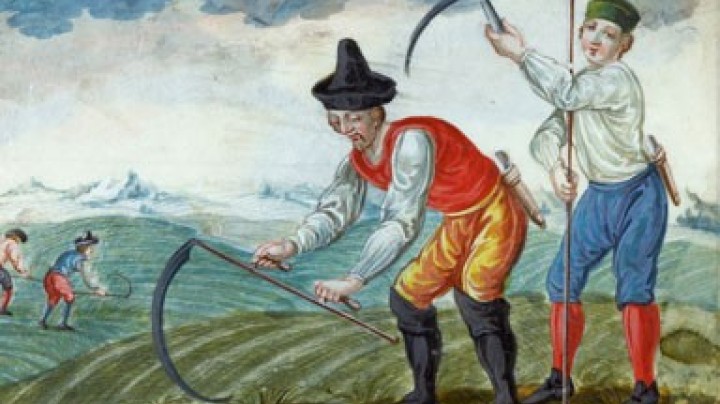Childbearing and childrearing. Women in the household
Although women had no say in public matters, they were indispensable for the existence of the household.
Martin LutherAs soon as they [women] speak about anything other than household matters they are good for nothing. Although they have their worth, they are deficient in things they do not understand… This shows that Woman was made for running the household.
The household of the early modern era was patriarchal in structure. Although a woman was allowed to become mistress of the house if her husband died, as a rule it was the man who was head of the household and to whom all its members and effects were subject: wife, children, servants, chattels, livestock and fields. The household was therefore a living and working community in which tasks were clearly defined and allocated. The master of the house was in charge of business dealings and also liable for any damage resulting from them. Women were by and large excluded from these processes.
Apart from the tasks traditionally allocated to women, which varied according to the type of household (peasant, artisan or merchant), women were also bound to the home through pregancy and childcare. However, this meant that women had relative independence within this sphere. Without instructions from the master they not only provided for clothing and food, tended small domestic animals and the garden and minded the children, but were actually in sole charge of their home and responsible for ensuring its survival. In these chores they were supported by their own children as well as menial servants. More often than not, the woman would also take on extra work outside the home such as labouring in the fields or buying and selling goods at market. Depending on the size of a household, women were involved in its running to a greater or lesser extent. The only households where was a strict separation in the organization of business and domestic tasks were those of craftsmen, as women were excluded from most crafts and their guilds.
The noblewoman’s world was quite different to that of the wives of peasants or craftsmen. They were usually mistress of a large household and were obliged to share their husbands’ official duties. They rarely had to engage in manual labour or childrearing as these tasks were fulfilled by servants. While noblewomen did not need to make any ‘material’ contribution to the household, they had more cultural and social duties.
Although women played a subordinate role in the household-family, their contribution to its prosperity was crucial: ‘A house without a woman is like a stove without a fire’ ran a popular folk saying. The necessity of having a wife to run the household is also reflected in the fact that most widowers remarried within a very short period of time.

















